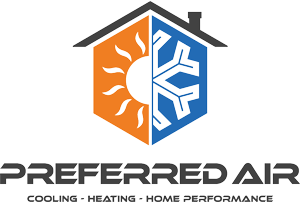HVAC News: What Homeowners Need to Know Now
- SEER to SEER2: Real-World Efficiency Standards Are Here
As of January 1, 2023, the Department of Energy introduced SEER2, a stricter efficiency rating that reflects actual usage conditions more accurately than the old SEER system.- Northern states now require at least 13.4 SEER2, which is equivalent to the previous 14 SEER.
- Southeast and Southwest regions (including Florida) require 14.3 SEER2 for split systems under 45,000 BTU, with EER2 and HSPF2 rating adjustments depending on unit specifications.
The takeaway? Any repeat equipment installation must comply with these region-based SEER2 standards—or it won’t pass muster.
- Federal Tax Credits: Act Now—or Miss Out
Originally, the Inflation Reduction Act of 2022 promised homeowners generous federal incentives for energy-efficient upgrades—extending credits through 2032.The One Big Beautiful Bill Act (OBBBA) of July 2025 changed that. Now, critical credits that include HVAC equipment come with a new expiration date: December 31, 2025.What’s At Stake
Tax Credit Type Covers Original Expiration New Deadline Section 25C – Energy Efficient Home Improvement Credit Heat pumps, central ACs, furnaces (30% credit, up to $2,000 for heat pumps; $600 for AC/furnace) Through 2032 Expires Dec 31, 2025 Section 25D – Residential Clean Energy Credit Solar, geothermal, battery storage (30%) Through 2035 Expires Dec 31, 2025 To qualify, the equipment must be installed and fully operational—“placed in service”—by the end of 2025. Starting this year, a manufacturer-issued Product Identification Number (PIN) is required to claim the credit.
- Why These Changes Matter for You
- Don’t assume 2032 is still the target—the credit window closed early.
- Only systems meeting SEER2 standards installed before year-end will qualify for tax benefits.
- Keep all documentation—installation receipts, PINs, utility permits, and Form 5695—for your tax filing.
- Smart Next Steps for Homeowners
- Check efficiency compliance: Partner with your contractor to confirm that your equipment is SEER2-certified per DOE region standards.
- Schedule promptly: Aim to have your system installed by mid-December 2025 to buffer against delays.
- Track paperwork: Gather all manufacturer documentation, including PINs and invoices, to file IRS Form 5695.
- Ask your HVAC provider: Make sure the equipment and installer meet federal standards and can provide all required documentation and guidance.
Final Word
Federal tax credits for HVAC equipment are expiring at the end of 2025—far sooner than originally planned under the IRA. Coupled with updated SEER2 mandates, this makes 2025 a critical year for homeowners looking to upgrade. Don’t delay—your savings (and compliance) depend on acting now.
Unlock Savings with the 25C Tax Credit!
Did you know you can save up to $3,200 annually with the 25C tax credit? Here’s how Preferred Air can help you benefit from this incredible opportunity:
What is the 25C Tax Credit?
- Annual Savings: Up to $3,200 per year.
- Coverage: 30% of eligible home improvements, including HVAC retrofits, insulation, and blower door services.
- Eligibility: Applies to existing homes, excluding new constructions and commercial buildings.
How Preferred Air Can Help:
- Expert Installations: We provide professional HVAC retrofit installations, ensuring your system is optimized for efficiency and tax credit eligibility.
- Insulation Services: Upgrade your home’s insulation with our top-quality materials and expert installation.
- Blower Door Testing: Ensure your home is energy-efficient with our blower door testing services, which can identify areas for improvement.
Steps to Claim Your Credit:
- Schedule a Consultation: Contact us to discuss eligible improvements for your home.
- Professional Assessment: Our certified technicians will assess your home and recommend the best solutions.
- Complete Installation: We’ll handle the installation, ensuring all requirements for the 25C tax credit are met.
- Documentation: Receive the necessary documentation for your tax credit claim.
Why Choose Preferred Air?
- Certified Technicians: Our team is fully certified and experienced in maximizing energy efficiency.
- Transparent Pricing: No hidden costs—just honest, fair pricing.
- Customer Satisfaction: We treat our customers like family, ensuring a supportive and positive experience.
Ready to Save?
Contact us today to learn more about how you can take advantage of the 25C tax credit and start saving on your home energy costs!
